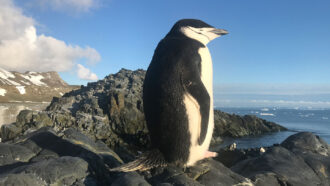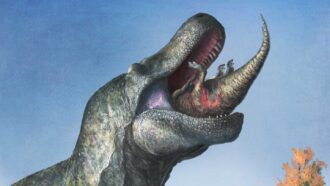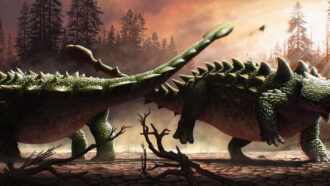Jake Buehler
Jake Buehler is a freelance science writer, covering natural history, wildlife conservation and Earth's splendid biodiversity, from salamanders to sequoias. He has a master's degree in zoology from the University of Hawaii at Manoa.

All Stories by Jake Buehler
-

As the climate warms, polar bears are facing more germs
Polar bears have been exposed to more viruses, bacteria and parasites in recent decades, a new study shows. These may come from their diet.
-
 Oceans
OceansUnderwater mountains in the Pacific Ocean may be home to 20 new species
A recent expedition to undersea mountain ranges off the coast of Chile revealed a new seamount and a rich world of deep-sea biodiversity.
-
 Plants
PlantsThis squid-like ‘fairy lantern’ plant is new to science
A newly named species of fairy lantern — a parasitic plant — sports tentacles and grows among leaf litter and rotten logs in Malaysian rainforests.
-
 Animals
AnimalsCorals may have been the first life forms to glow in the dark
Ancestors of modern octocorals may have lit up the deep sea as far back as 540 million years ago.
-
 Animals
AnimalsThis egg-laying amphibian feeds its babies ‘milk’
Similar to mammals, this caecilian — an egg-laying amphibian — makes a nutrient-rich, milk-like fluid to feed its babies up to six times a day.
-
 Animals
AnimalsHorned lizards and snakes tend to ambush their prey
The reptiles’ horns could help or hinder during foraging, depending on how they hunt. This might be why horns evolved in some species and not others.
-
 Animals
AnimalsBonobos cooperate across social groups — even with no clear payoff
Bonobos cooperate with outsiders, even when they get no clear benefit out of it. This could shed light on social evolution in other primates, even us.
-
 Animals
AnimalsThese penguins nap 10,000 times a day, for seconds at a time
Such an extreme sleep schedule may help nesting chinstrap penguins protect their young while still getting more than 11 hours of shut-eye.
-
 Fossils
FossilsT. rex may have hidden its teeth behind lips
Dinosaurs like Tyrannosaurus have long been portrayed with their big teeth bared. But new research suggests this wasn’t so.
-
 Animals
AnimalsThis parasite makes wolves more likely to become leaders
Gray wolves infected with Toxoplasma gondii make riskier decisions. This makes them more likely to become pack leaders or strike out on their own.
-
 Fossils
FossilsArmored dinos may have used tail clubs to bash each other
Broken spikes on a fossil dino’s sides are consistent with the armored beast having received a mighty blow from another ankylosaur’s tail club.
-
 Fossils
FossilsDinosaur ‘mummies’ may not be as rare as once thought
Bite marks found on a fossilized dino show that skin can be preserved even when a carcass is not immediately smothered by sediment.